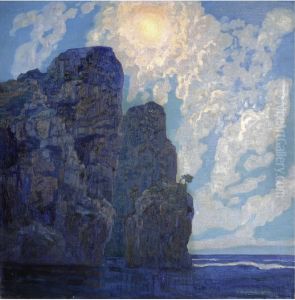Hermenegildo Anglada Camarasa Paintings
Hermenegildo Anglada Camarasa, born Hermenegildo Anglada i Camarasa on February 11, 1871, in Barcelona, Spain, was a prominent painter known for his vivid and colorful portrayal of figures and landscapes. He is often associated with the Symbolist and Modernisme movements.
Anglada Camarasa began his art studies at the School of Fine Arts in Barcelona and later moved to Paris, where he continued his education at the Académie Julian and the Collarossi Academy. In Paris, he was influenced by contemporary trends, including Impressionism and Post-Impressionism, which he adapted to his own unique style characterized by bold color and dynamic composition.
During his time in France, Anglada Camarasa became a part of the vibrant art scene, associating with influential artists and writers of the day. His work was exhibited at the Salon de la Société Nationale des Beaux-Arts and the Salon d'Automne, where it received critical acclaim. He also participated in the famous 1900 Exposition Universelle in Paris.
The artist's oeuvre includes a variety of subjects, from lush, exotic landscapes to intimate portraits and florals, often imbued with a sense of sensuality and opulence. His use of light and shadow, as well as his distinctive use of color, set his work apart.
In 1914, with the outbreak of World War I, Anglada Camarasa returned to Spain, settling in Mallorca. The island's landscape and light had a profound impact on his work, leading to some of his most celebrated paintings. He became a key figure in the local art community and influenced a generation of Spanish painters.
Throughout his career, Anglada Camarasa's work was exhibited internationally, including in England, the United States, and across Europe, helping to solidify his reputation as a significant artist of the early 20th century.
Hermenegildo Anglada Camarasa continued to paint until his later years, passing away on July 7, 1959, in Port de Pollença, Mallorca. His legacy is preserved in various museums and galleries around the world, and his contributions to Modernisme and Symbolism continue to be celebrated.
